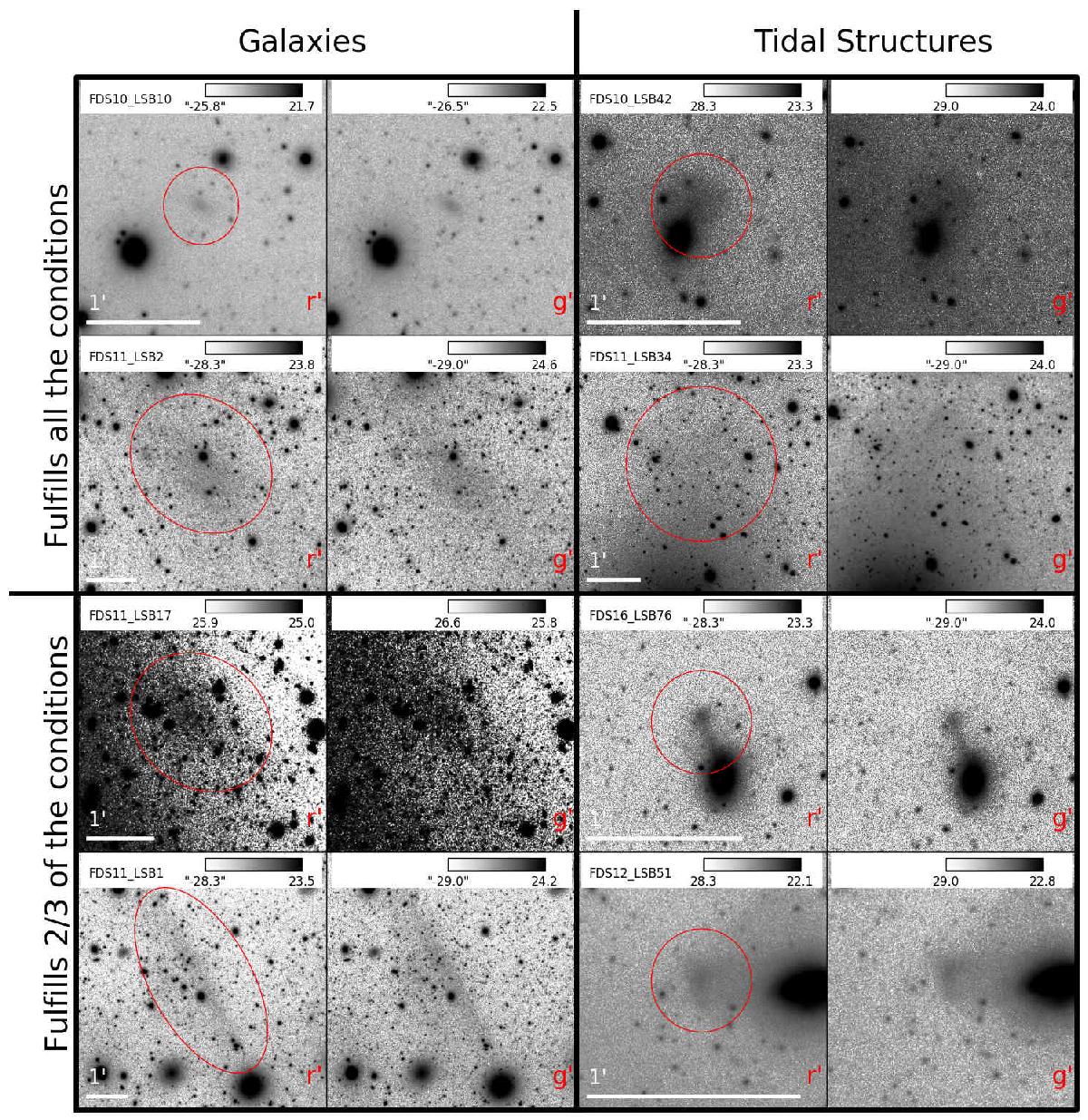Fig. 5

Left two columns: g′- and r′-band cut-outs of objects (highlighted with the red ellipses) classified as galaxies. Correspondingly the two rightmost panels show examples of tidal structures. The two top rows show typical examples of both classes, which fulfill all three classification criteria of their classes. The two lower rows show examples of objects which only fulfill two of the three criteria of their classes. Specifically: FDS11_LSB17 has a center with excess light and symmetrical shape, but overlaps with the outskirts of NGC1399. FDS11_LSB1 has a very elongated shape, but still has radially fading light profile away from its center, and it is not connected to any nearby galaxies. FDS12_LSB51 has an area with excess light which could be called a center, but its irregular shape and strong connection to the larger galaxy next to it makes it a tidal structure. The criteria for classifying FDS16_LSB76 as a tidal structure are the same as for FDS12_LSB51.
Current usage metrics show cumulative count of Article Views (full-text article views including HTML views, PDF and ePub downloads, according to the available data) and Abstracts Views on Vision4Press platform.
Data correspond to usage on the plateform after 2015. The current usage metrics is available 48-96 hours after online publication and is updated daily on week days.
Initial download of the metrics may take a while.


